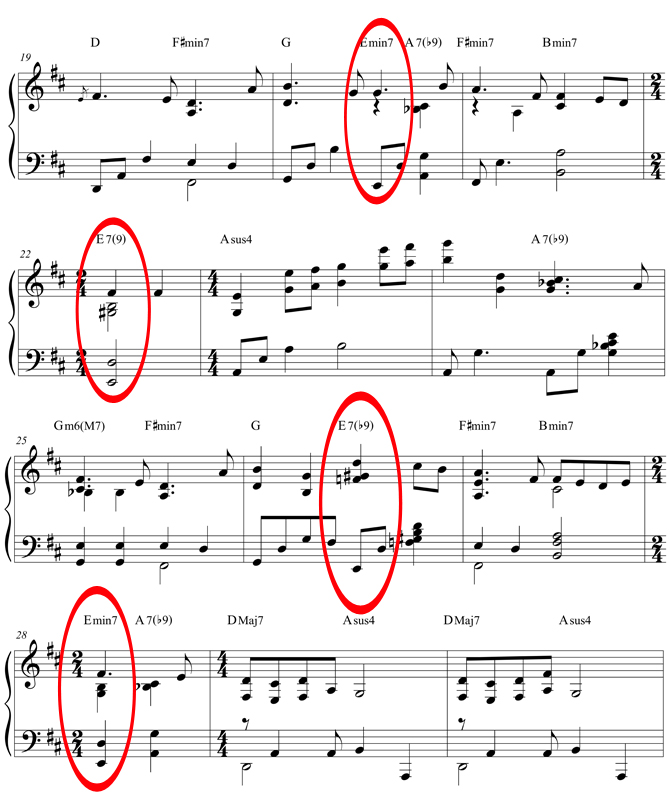Free Lessons
When to use secondary dominants
People often ask when they should use secondary dominants in their music. The short answer is this: when it sounds good. But let’s talk a little more about it.
Here is the simple rule: any time you play a minor 7th, you can change it to a secondary dominant by raising the third of the chord a half step.
By way of example, I am going to be working with my new free arrangement of “He Leadeth Me.” I have circled all the E chords (whether minor or dominant).

Note first that substituting E7 for Emin7 is as simple as playing G# instead of G. Really, this is a very simple thing to do.
Emin7 is of course the ii chord in the key of D. It resolves to A7 which is the V chord. If you change the Emin7 to E7, it becomes a V/V secondary dominant.
If you play this clip and change those E7’s back to Emin7, you will note that it still works fine. Some of you may actually prefer the minor chord in those places.
So why choose one or the other? The first rule is whether it sounds good. The second rule is to consider the melody note. If the melody note is the minor third of the chord (in this case G natural), playing a secondary dominant there is possible but will create a very complex sound that just may not work in context. That happens in bar 20.
I am going to get technical for a second. In some contexts, I would play E7 there, forcing the melody note to be the #9 of the chord. I love that sound. If playing Christmas music or jazz, it is a great sound and I use it all the time. I would even use it in church music such as my recent recording of “Shall We Gather at the River” because it is already full of complex harmony like that. But in this arrangement with its simplistic harmony, it would really stand out in a strange way. So, I went with the more conservative Emin7 there.
In the next three occurrences of the E chord, the melody note is the 9th or 7th. Those notes sound great and not overly complex with either Emin7 or E7. Play them and you will see what I mean.
A third rule to consider is whether moving to the secondary dominant allows you to get some extra color into the chord. For example, I could have easily added a 13th to the E7 in bar 22 and probably should have. For some reason I can’t now explain, I used the ultra-vanilla 5th (B) there instead of the 13th (C#) or b13 (C). (The 5th is not only unnecessary in a dominant chord but flat out boring.)
You cannot use all of those color notes with minor 7ths. For that reason, the secondary dominant becomes attractive.
A final rule involves the style. Some stylings just don’t support secondary dominants (in other words, they sound strange). And even if they sound good, you can probably go too far. Just for variety’s sake, I did not change every single minor chord in this arrangement to a secondary dominant. From a functional standpoint, I could probably get away with it. From a stylistic standpoint, I could not.
That is it really. Experiment a bit and you will start to get a sense of when you can do this substitution.
